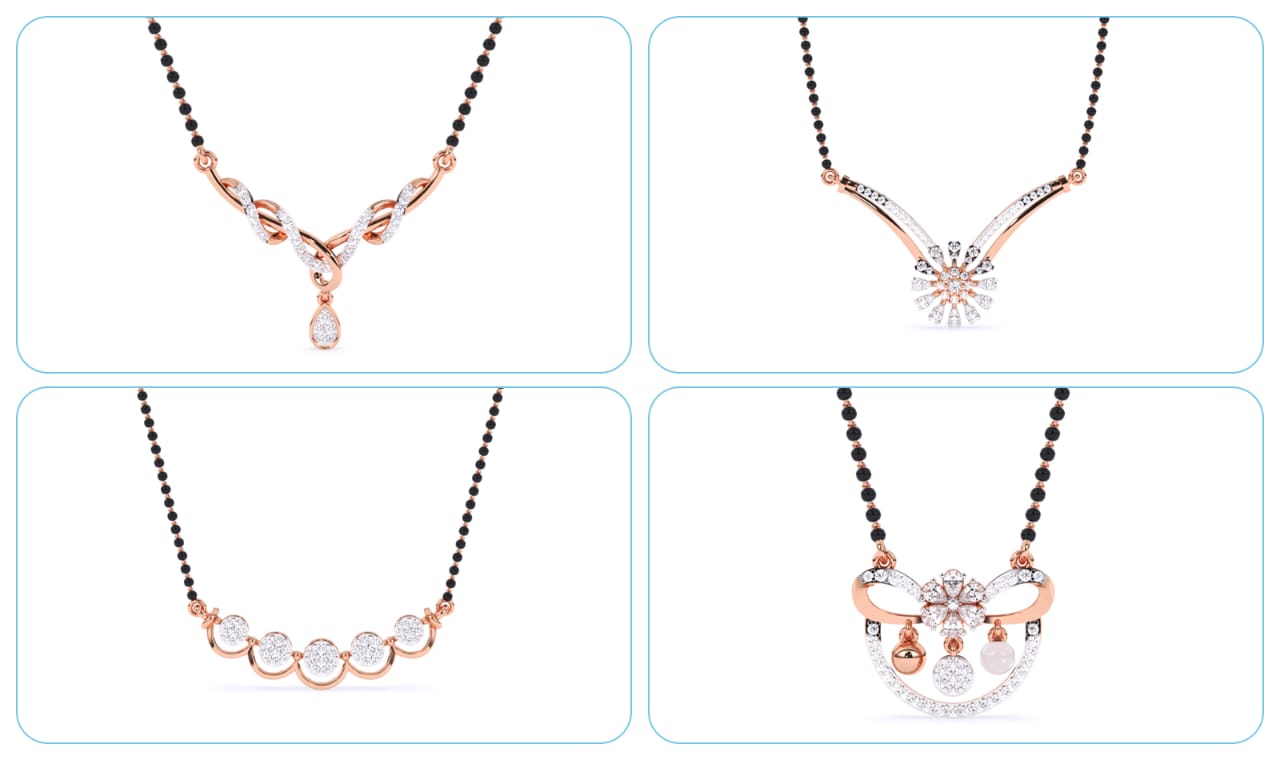Latest Designs for the New Year collection...
Shop NowAyaani Diamonds - AhmedabadChandigarhDelhiJodhpurMathuraRaipurSuratAhmedabad
No products found.
No products found.

29 April 2025
It’s small. It’s silent. And yet, it holds a world of meaning.
The mangalsutra for many Indian women isn’t just a piece of jewellery. It’s a quiet promise. A delicate thread that binds two souls together in marriage, belief, and lifelong companionship.
From ancient scriptures to modern weddings, the mangalsutra has stood the test of time, not just as tradition, but as emotion. As life moves forward and roles change, this timeless symbol continues to evolve, just like the women who wear it.
But what exactly is a mangalsutra? What do the black beads mean? Why is it so important in Indian culture? And how has it transformed in today’s world?
Let’s explore the meaning, design, history, rules, and significance of the mangalsutra in a way that speaks to both the heart and the mind.
The word Mangalsutra comes from the Sanskrit ‘mangal’, meaning auspicious, and ‘sutra’, meaning thread. Together, it translates to "a sacred thread of good fortune.”
Essentially, it is tied by the groom around the bride’s neck during the wedding ceremony, the mangalsutra represents the beginning of married life. In many Indian communities, it’s as essential as the wedding vows themselves.
In simple English, a mangalsutra is a black beaded necklace usually with a gold chain and pendant that signifies a woman's marital status, love, and well-being.
Though small, every part of the mangalsutra carries deep meaning:
So, what is a mangalsutra made of? At its heart, love, faith, and intention. In the form of black beads and gold, sometimes beautifully reimagined.
Just like no two love stories are the same, mangalsutra designs vary across regions and cultures in India.
Today, you’ll also find:
Whether traditional or contemporary, every design honors a woman’s choice to wear her story, her way.
Beyond tradition, the mangalsutra carries emotional and symbolic significance:
Interestingly, there are also scientific and Ayurvedic beliefs associated with mangalsutras:
While these aren’t proven by modern science, they form a powerful part of the cultural narrative and spiritual wellness associated with this ornament.
So, what is a mangalsutra?
It’s a chain, but more importantly, it’s a connection. It’s a set of beads, but more deeply, it’s a circle of trust. Whether bold or subtle, worn or stored, traditional or modern, mangalsutra is a symbol of something deeply human: the power of love, belief, and choice.
1. Can a woman remove her mangalsutra?
Yes, she can; traditionally, they wore it all the time, but due to comfort and safety, it is common to remove the mangalsutra.
2. Can a woman wear two mangalsutras?
Yes, in fact, in some traditions it is appreciated to wear two mangalsutras.
3. What happens if the mangalsutra breaks?
Traditionally, it was believed to be bad luck, but don’t worry, it could also mean that your mangalsutra needs care and repair.
4. Is it okay not to wear a mangalsutra at all?
Of course, while it’s a tradition but every person is obliged to have their opinion. Many women show commitment through rings, tattoos, or bracelets.
5. Why don’t Bengali brides wear a mangalsutra?
It’s a cultural distinction, as in Bengali customs, brides wear a shankh pola instead of a mangalsutra.
6. What is a mangalsutra called in English?
In English, it is often referred to as “sacred marriage necklace” or “wedding necklace.” However, there’s no exact translation that catches the essence of the mangalsutra.
7. What is the difference between thali and mangalsutra?
While both are symbols of marriage, a mangalsutra is typically worn in North, West, and Central India with black beads and a gold chain. Thali (or thirumangalyam) is more common in South India.
8. Can a woman wear a mangalsutra bracelet instead of a necklace?
Yes, many women today opt for mangalsutra bracelets for daily wear.
© 2025, AYAANI DIAMONDS. Developed & Maintained By Nothing Info, Designed & Marketing By Kyros Solution.